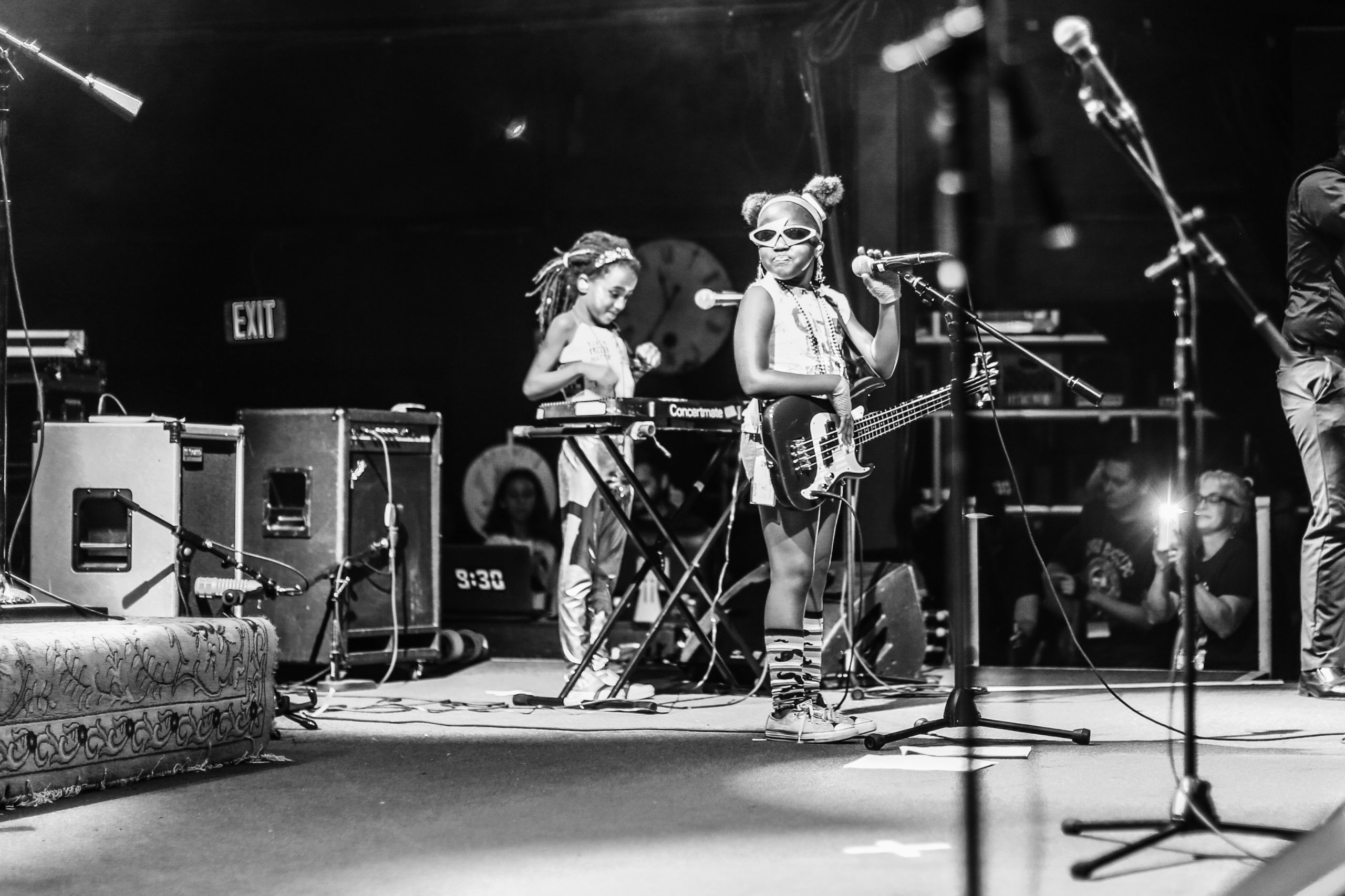In the 13 years since D.C.-based Step Afrika! debuted Migration: Reflections on Jacob Lawrence, the field of percussive dance has grown by leaps and bounds. Black performing artists have benefited from an influx of support, including millions from philanthropist MacKenzie Scott. Meanwhile, many historically White arts organizations are continuing to increase racial diversity, both onstage and off.
And yet, the remount of Migration from Step Afrika!, now running at Arena Stage to close out its 2023-24 season, feels stuck in 2011, isolated from the growth enjoyed by the intersecting worlds of percussive and Black dance.
Rather than create new dance numbers inspired by Jacob Lawrence’s 60-painting series depicting the Northern migration of Black Americans, Step Afrika!’s founders mostly cobbled together material from previous shows and repackaged it with images of paintings projected in the background. Much of that packaging is very good—Step Afrika! is performing with nearly 30 musicians and dancers, its largest company ever—but as a longtime fan, I walked into the Kreeger Theater hoping to see something new and left disappointed.
C. Brian Williams founded the company in 1994 to preserve, perform, and promote stepping, a percussive dance form with roots in West African folk dancing and crystallized at historically Black colleges that combines tap with coordinated arm movements and rhythmic body slaps. Over the years, Step Afrika! has also integrated other dance disciplines from continental Africa and the diaspora. Dancers receive 11-month contracts, longer than those of any American ballet company. They perform at White House Juneteenth celebrations, Arena Stage’s annual holiday shows, and typically tour at least 50 dates per year.
Step Afrika! has enjoyed phenomenal success, without receiving a big-money grant from Jeff Bezos’ ex. But if the company has the resources, I do wish it would welcome fresh artistic advice. Hiring an out-of-house director, choreographer, or even a dramaturg could help Step Afrika! explore new territory and create a show worthy of Lawrence’s legacy today.
Migration proceeds mostly chronologically, tracing the forced migration of enslaved people to the Americas, then through slavery, freedom, and sharecropping in Act 1, and onward to the North and 20th century in Act 2. The images, projected on five screens suspended above the stage, include both detailed close-ups and full-scale images of Lawrence’s paintings. Opening moments will look familiar to anyone who has seen one of Step Afrika!’s shows that integrate African drumming. A dozen dancers rotate around freestanding drums in unison, the art of making noise synonymous with the art of fierce movement.
“Wade Suite,” a highlight of the new material, will remind dance fans of “Revelations,” the suite of spirituals that closes nearly every performance by Alvin Ailey American Dance Theater. Working in Step Afrika!’s favor, however, is the live vocal quartet crooning “Wade in the Water” and other spirituals to harmonically fabulous arrangements.
Gum-boot dancing, performed by dancers in thigh-high Wellingtons, is a clever addition—wading, get it?—but also anachronistic: The South African dance style turns up in other Step Afrika! variety shows, but makes little sense in the 19th-century American South.
Much more jarring: moments when the paintings bear no relation to the music and movement, or even detract from it, such as knee-slapping choruses of “Hallelujah” juxtaposed against a hanging noose.
At intermission, a friend and I theorized that maybe the point was to convey an indomitable spirit of survival despite the oppression of slavery and the long shadow of Jim Crow. But somber images keep popping up at tonally mismatched moments in Act 2, like randomly generated Jacob Lawrence screensavers. (The projections are credited to Step Afrika!’s former artistic director, Jakari Sherman, who also directed Migration and choreographed many of the numbers.)
Act 2’s “Trane” was lifted from a piece Step Afrika! debuted at a jazz festival in 2009, set to music by John Coltrane, performed with Lionel D. Lyles II playing onstage. There’s a bit more modern dance incorporated into Migration than other Step Afrika! shows, but regrettably the choreography doesn’t always flatter the dancers or the music, with far too many anguished reaches to nowhere.
Thankfully, the full “Trane Suite” also includes “Off the Train,” an upbeat number for the company’s men, luggage in hand, who pound the stage with suitcases and jaunty canes. (A common prop in stepping, well integrated here, with a Lawrence painting to match.) The show’s original finale, “Chicago,” also gets the balance of art, dance, and music right. Arena Stage’s in-house shop built new, easy-to-move-in costumes for the scene, several of which coordinate with the cloche-wearing women in Lawrence’s paintings.
In theory, if not execution, the Arena Stage revival of Migration may go down as one of the best collaborations in the history of D.C. arts. My hope for Step Afrika!, however, is that the company will look beyond the District and tap into the larger Black dance renaissance. There’s never been a deeper or wider field of Black choreographers: MacArthur “genius” Kyle Abraham, Jennifer Archibald (who has a premiere at the Kennedy Center this month!), Rena Butler, two-time Tony nominee Camille Brown, recent Washington Ballet debutante Chanel DaSilva—the list continues. Step Afrika!’s dancers deserve the fresh blood, that integrating spark that can keep their art form migrating forward for another 30 years.
Presented by Arena Stage, The Migration: Reflections on Jacob Lawrence, directed by Jakari Sherman, choreographed by Sherman and others, runs through July 14 in the Kreeger Theater. arenastage.org. $56–$105.




